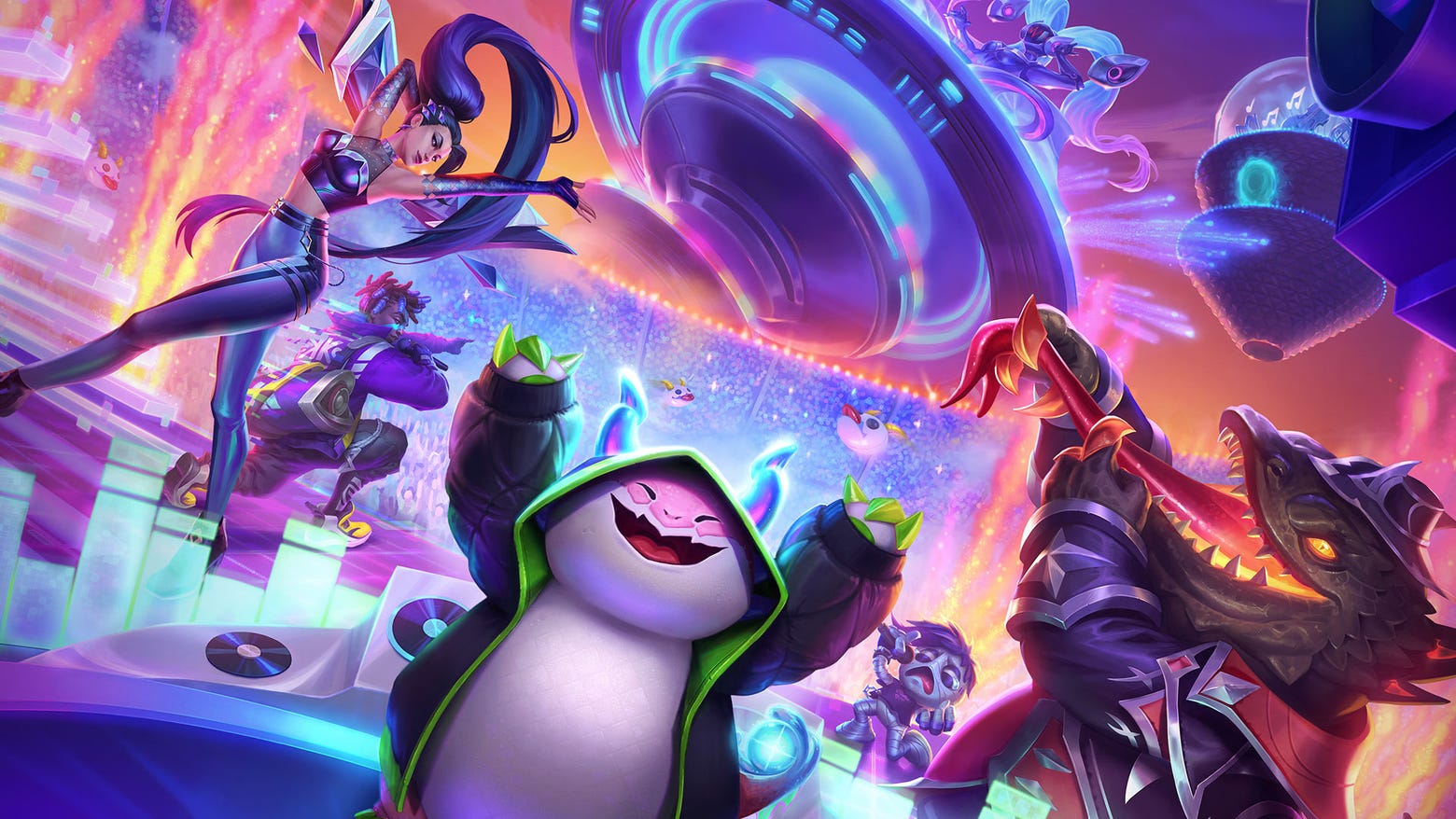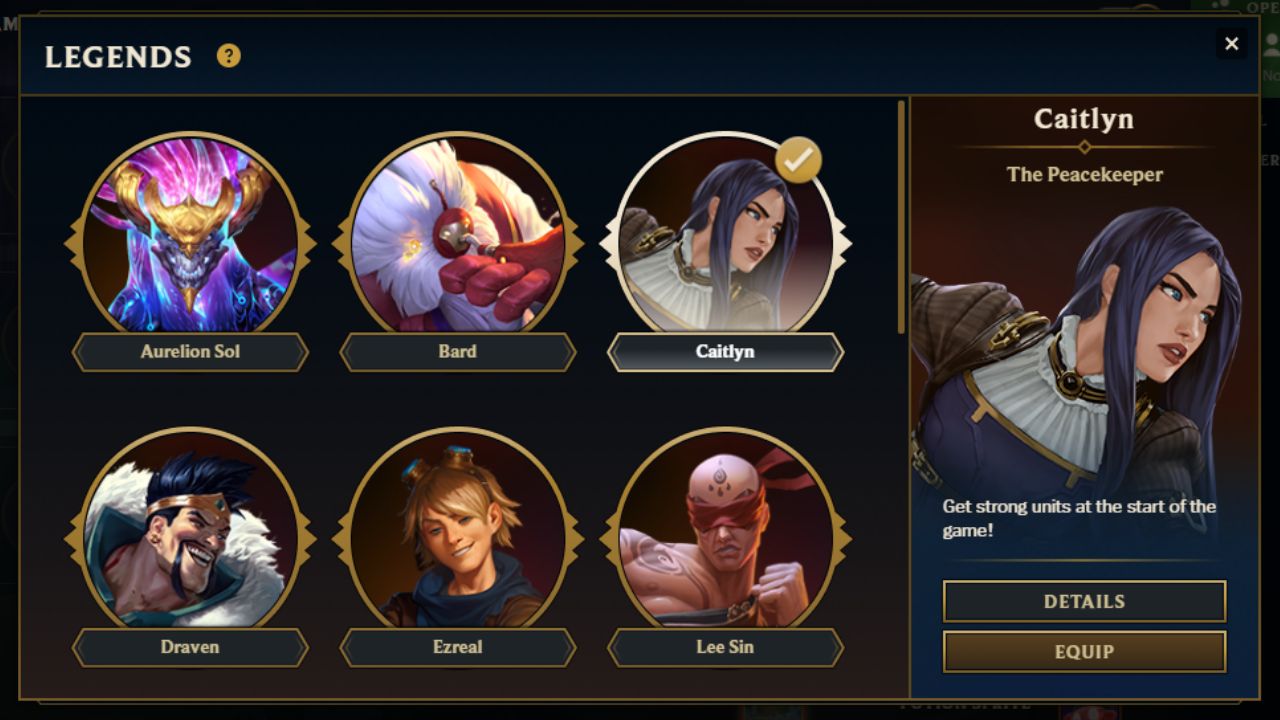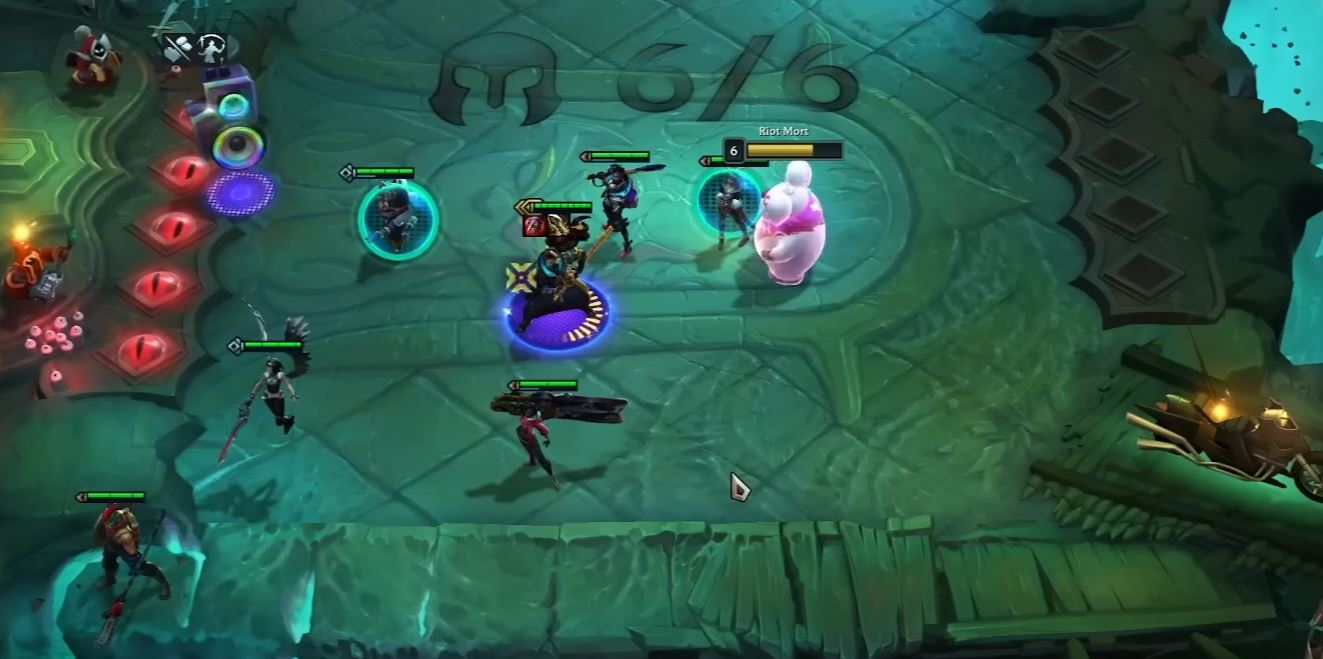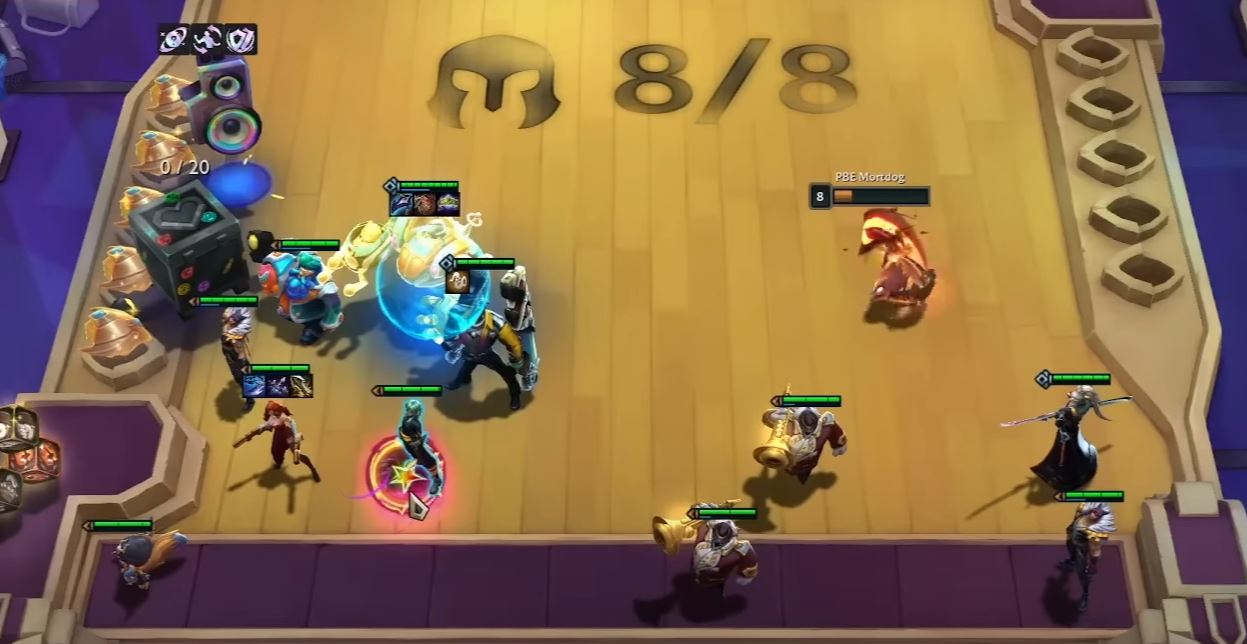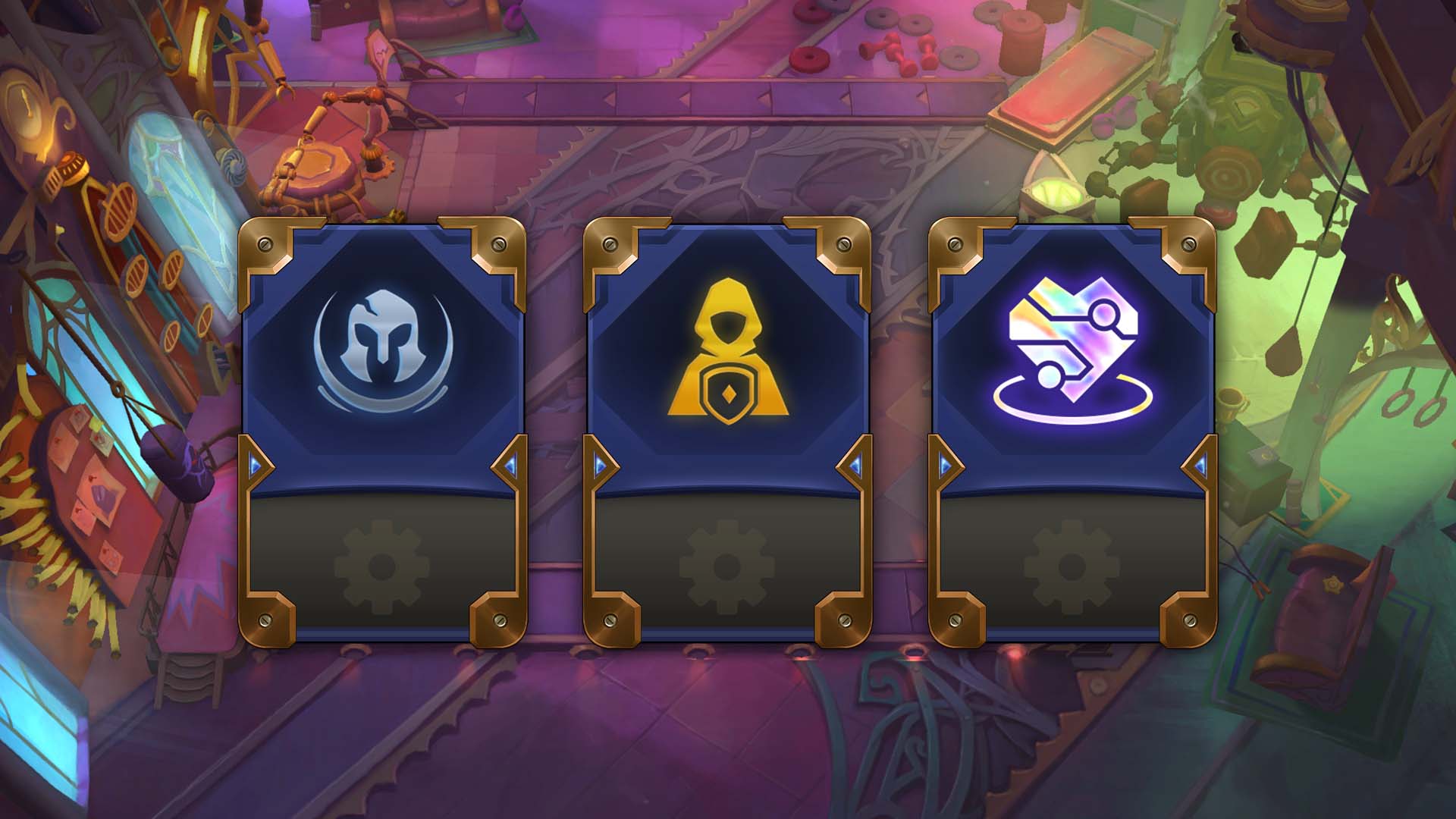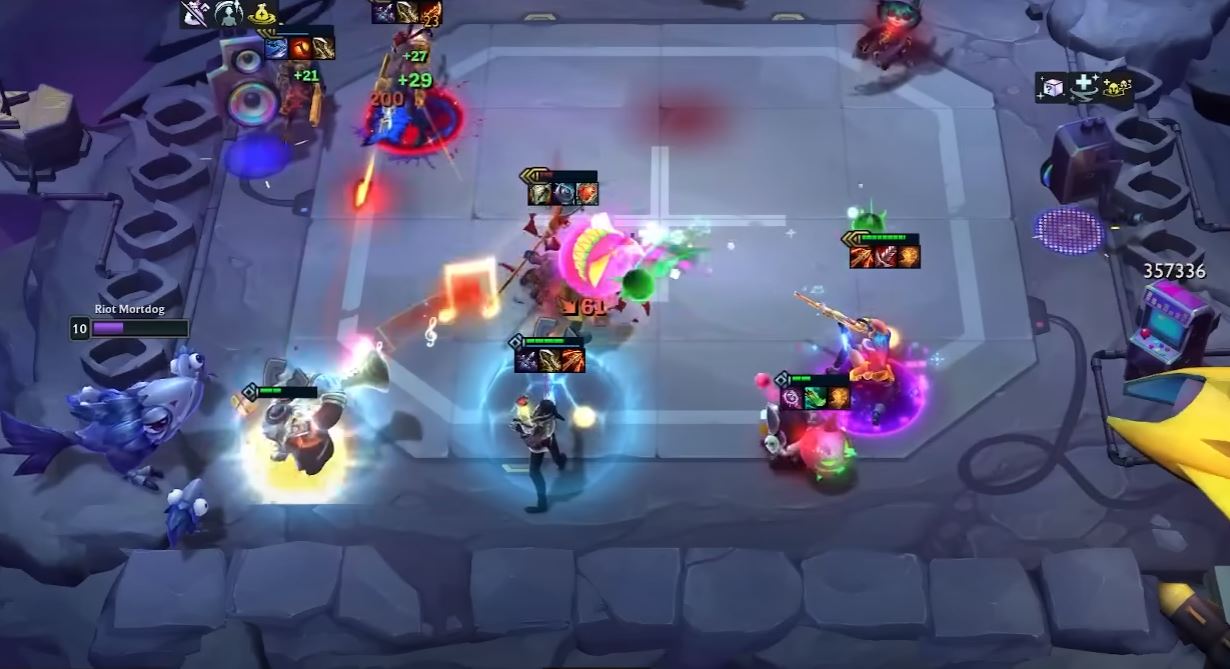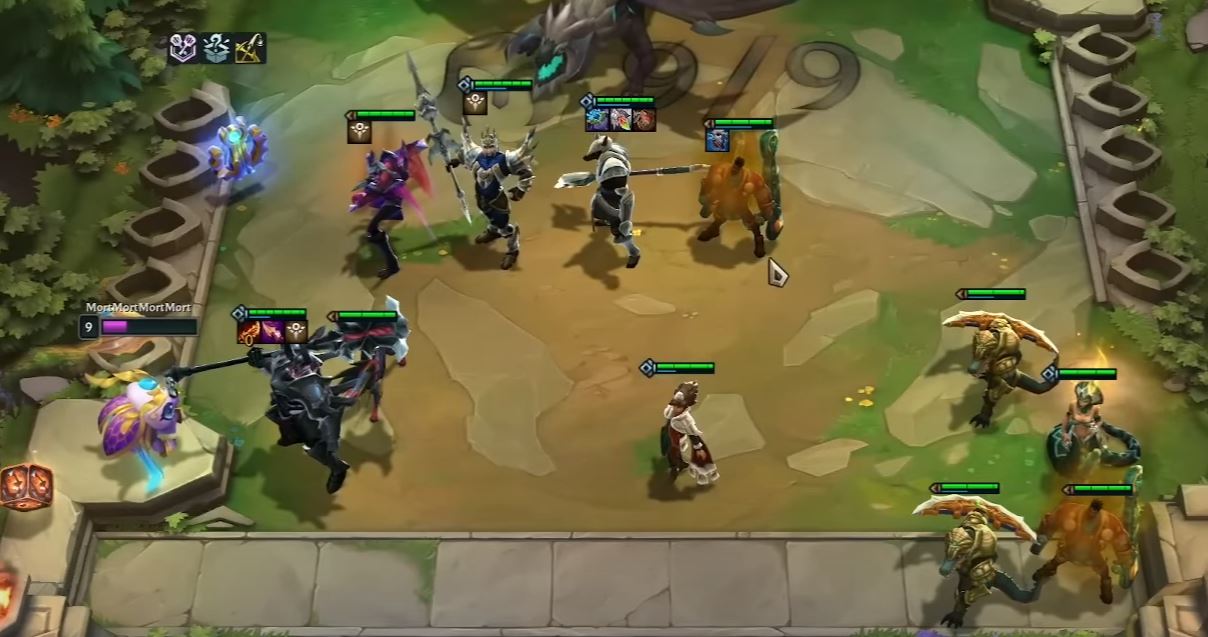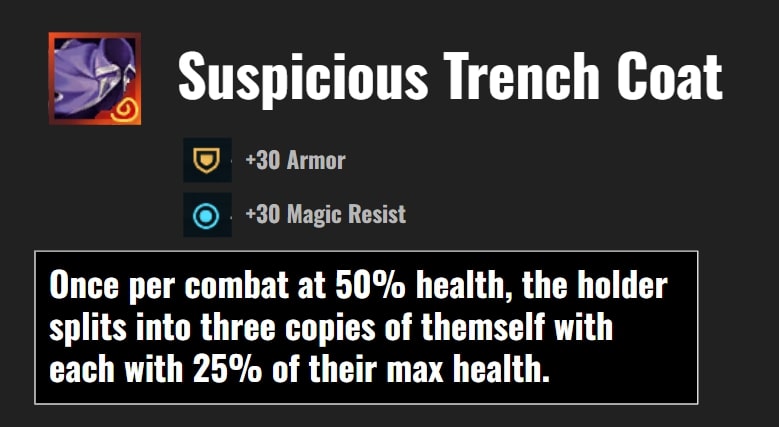With about a month left in Remix Rumble, it’s time to reflect upon what we promised to deliver this set and how we can improve for our next set! But before we get into it, I’d like to remind you that the Remix Rumble Championship will be held the first weekend of March (March 1-3) and at the very end of the final day, we’ll be dropping our next Dev Drop which will reveal what we’ve been working on for our next set… Alright, this is always a deep dive, so put on your favorite Remix Rumble mixtape and let’s get started!
But first, a TL;DR:
Looking Back: This is where we directly respond to the goals we created last set in our previous Learnings article.
- Legends: Legends were a big conversation of our last Learnings article. They won’t be returning any set soon, but the design space remains of interest to us. Until we can find a system of pre-game selections that doesn't come with the negative impact of reducing variance a wide amount, we’re not rushing to jump back into the space.
- Region Portals: Portals are about as TFT-y as it gets. At this point, we believe that Portals are like Augments, and are going to stay as a permanent part of the game.
- Power Bloat: We had the goal of lowering power slightly (namely three star, four and five-costs) after Runeterra Reforged and we did this through adjusting a few systems. We did this with Level 10 and bag size changes that are here to stay (for now).
- Skins and Accessibility: Base skins are really easy to read, and Runeterra is just a fun place to come home to. We don’t have anything to announce right now, but I can confirm that at least one set in the next two years will take us back to Runeterra!
- Exciting and Unique Low Cost Units: We’re still continuing in the direction of making low-cost champions unique, fun, and having their own fantasy to explore for our reroll enjoyers and flex players alike.
- Set Complexity and Balance: Set complexity makes balance tough. The more moving parts, and possible combinations exist, the more things you have to account for for balancing. Despite Remix Rumble being our most complex set to date, we did pretty well on the balance side of things with our only B-patch (mid-patch update) being a planned one over the Riot-wide Winter Break. Hopefully this trend can continue.
Looking Forward: This is where we set out a list of goals to improve upon for the next set!
- Game to Game Variance and Loot Distribution: Moving forward, we want the item and loot drop system to remain one of game to game variance, NOT player to player variance. Editor’s note: Read this section for a systems change spoiler!
- Mechanics & Overall Complexity: When examining our past ten sets, the most successful set mechanics are the ones that add variability and complexity that keeps each game feeling totally fresh, but with Portals and Augments as evergreen mechanics, we can experiment with set mechanics to achieve thematic goals, or just make a set feel unique.
- Champion Skill Intuitiveness: So in the future, we’re going to be paying extra close attention to our champions and trying to make them as intuitive as possible from a glance, with the extra details to be discovered on the tooltip.
- Economy Traits: One of our big challenges moving forward is that we have to keep reinventing this space as players solve our economy traits each set. This won’t be easy, trying to do it 3 times a year, but we are committed to it!
- High Moments & Prismatic Traits: We’re taking steps to make sure Prismatic Traits and other High Moments are hard to hit, and worth hitting.
- Item Uniqueness & Artifacts: Artifacts allow us to do very cool things that our core item system does not allow for…so we’re adding over 20 more new Artifacts that’ll come at some point DURING our next set.
Looking Back
To start off, let’s take a look at the last learnings article, see how we did, and directly respond to the points we brought up last time.
Legends
In our last learnings piece for Runeterra Reforged, we talked about how Legends would not be part of our next set, but might be a concept we revisit in the future. For now, that future seems far off. Until we can find a system of pre-game selections that don’t come with the negative impact of reducing variance a wide amount, we’re not rushing to jump back into the space. So Legends, or a concept similar to them, likely aren’t coming back this year. We’ll update you if this changes.
Portals
Portals have made the opening of each game a healthier experience by replacing opening Carousel. We can’t stress how little we miss the weird APM check at the start of the game to get your desired component. In addition to doing away with that, the different Portals add elements of variance and excitement to the start of the game, much like beginning a run of a roguelike game. When you get those Scuttle Puddle or Prismatic Symphony games, you know you’re in for a treat.
We thought that starting Remix Rumble with lower to mid-impact Portals would allow players to learn the complexities of a new set in a less hectic environment. But over time, it became clear that players wanted the more impactful portals right away. Delaying more high-excitement Portals was ultimately not the correct move, but moving forward with our next set, we have a pretty big announcement: At this point, we believe that Portals are like Augments, and are going to stay as a permanent part of the game.
Power Bloat
This is a tougher one. We explicitly had the goal of lowering the amount of 3-star four and five costs, as they had become too common in Runeterra Reforged. We did accomplish that goal through measures like adding Level 10 and changing champ odds in the level 7/8/9 space. However, the reality is when you nerf something like this, players who really enjoy that instant gratification of hitting those high moments and are now told it happens less often, feels bad. We knew this would come with some pain, as any time someone didn’t hit during Remix Rumble, they’d point to these changes as the cause—even if untrue. I’ll talk a bit more about this in a later section, but for our next set, expect pretty minimal changes in this space. There will be a few level odds changes now that Headliners are gone, but otherwise Level 10 is sticking around and bag sizes are staying as is. And just to be extra clear here, we will not be adding a Level 11 just because it’s our 11th set.
Skins & Accessibility
Last set we saw a shared appreciation in the accessibility and readability of champions using their base skins. This led to a conversation that we shared in our last Learnings article for TFT’s future in having more Runeterra themed sets in the future. Nothing to announce right now, but I can confirm at least one set in the next two years will be Runeterra themed. There may even be more; you’ll just have to wait and see.
Exciting Low Cost Units
We continued this pattern to an extent with champions like Annie, Yasuo, and Headliner Bard. But I wouldn’t say we crushed it with Remix Rumble. However this wasn’t a one off, and Headliner in particular made one cost reroll comps pretty tough to be viable without being a bit too strong. Champs like Corki and Nami really never got their chance to shine primarily due to the nature of their abilities. That being said, we’re still continuing in the direction of making low-cost champions unique, fun, and having their own fantasy to explore for our reroll enjoyers and flex players alike.
Set Complexity and Balance
On the balance side of things, we put a bunch of extra effort to make sure the set launched in a good state. We wanted our tenth set to start off with a bang, and we wanted the Vegas Open to be an enjoyable experience for everyone who watched and played in it. And while balance will likely never be perfect, you have to admit Remix Rumble was a MASSIVE improvement.
The only B patch was a planned one over the Riot wide Winter break, but otherwise nothing was ever WAY off base. Again, not perfect (True Damage Emblem, Disco, Heartsteel, etc) but a big improvement. We’re going to continue this, and hopefully get even better with our team gaining more experience as time goes on.
Looking Forward
Before we kick off this section, as this is our 10th learnings article and we approach TFT being 5 years old, this section isn’t going to be full of easy wins like it used to be. TFT is becoming a pretty mature game, and we’ve learned a lot over the years. In addition, any key learnings that do still happen might be difficult to implement immediately in the next set. Some learnings may challenge things that have been core to how we create sets for years, and require more time to really prove our hypothesis, rather than be applied in the very next set (and therefore discussed in an article like this). So if some of these come across as more philosophical or vague promises of “someday”, that’s why. Call it a side effect of 3 sets a year, or just a part of TFT entering adulthood as a game; we’ve already developed our identity, and now it’s just tinkering with it as we experience new things.
Game to Game Variance & Loot Distribution
As we’ve added more systems that help with game-to-game variance like Augments and Portals, the need for every system to add more variance has lessened. One system that still had this was our item and loot drops. Some games, you might get 3 components and 6 gold to start, while other players get 1 component and 18 gold. Other games, you might get a Tome of Traits while your opponents get 1 component. This created a level of imbalance that, when utilized well, could be a major factor in deciding the winner of the game.
Moving forward, we want the item and loot drop system to remain one of game to game variance, NOT player to player variance. This means there will be games where you start with 3 components and 6 gold, and there will be other games where you start with 1 component and 18 gold. The difference is that every player will have the same outcome. If you drop a gold orb, you will know that every player dropped a gold orb. The contents of that orb will be different, but in general, you’re never down resources. This means every game feels different, but fair.
And one last surprise, we are adding Prismatic Orb drops! These will contain some of the biggest rewards that shape the game such as Tome of Traits (no longer in gold orbs) or even Masterwork Upgrades (a consumable that changes an item into a Radiant item!). So be on the lookout for those.
Mechanics & Overall Complexity
When examining our past ten sets, the most successful set mechanics are the ones that add variability and complexity that keeps each game feeling totally fresh. Gizmos & Gadgets brought Augments, which have set the bar for what a successful set mechanic could be in terms of variance and replayability, but sets like Galaxies (with the Galaxy mechanic), or Runeterra Reforged (with Portals) have made similar strides.
Augments and Portals in particular are such a wide canvas of design space and player possibility, and because of that we are happy to have them be permanent and keep expanding and iterating on them each set. But in a world where Augments and Portals are permanent features of the game, this means future mechanics have to do less heavy lifting in terms of variance and complexity. This will allow us to use mechanics more as sources of thematic exploration, or novel spaces to try out a new system/mechanic—who knows, maybe we’ll one day discover the new Augments like we have with Portals.
We’re excited to explore Mechanics with the primary goal of being thematicly resonant and novel, and while our next Mechanic does add more variance, it will do so without adding significantly more complexity in the way that Headliner did for Remix Rumble. I wish I could talk more about what you may encounter here, but some spoilers will have to wait.
Champion Skill Intuitiveness
As we focus more on champion design in each set, one thing that keeps coming up is how intuitive a champion is. Ideally, you should be able to watch what the champion does and understand it without even needing to read the tooltip (cause you know, certain streamers are too busy gaining LP to actually read). Right now, we have a few examples of where this is working, but also a few where it’s not.
As an example of good in Remix Rumble, you can look to champs like Nami, Jinx, Kai’Sa, Lux, Caitlyn, and Ahri. Each of these you can watch in play and get how they work. Something like Jinx is an especially good example because even if you don’t know the full details of what Mini Gun and Rocket Launcher do, you can see that each time the mana bar fills up, Jinx swaps guns and her autos take on a different feeling. The more of these kinds of champions we have in the game, the easier it is for players to approach the set.
On the flip side, let’s take a champion like Neeko. She shields herself and slams down, but she also transforms into an ally. When transforming, doesn’t really do anything the ally does, just kinda hops down and does a little damage. It’s not super clear what she does. Am I supposed to be picking a champ to copy? Does it matter who I copy? These champs often create a bunch of confusion in how to play them, which is tough in Neeko’s case because at the same time, the transformation is very true to who Neeko is as a character.
So in the future, we’re going to be paying extra close attention to our champions and trying to make them as intuitive as possible from a glance, with the extra details to be discovered on the tooltip.
Economy Traits
Economy traits like Fortune, Mercenary, Underground, Piltover, and now Heartsteel have become a staple in TFT. Despite some of the balance challenges they present to get them just perfect, they are worth it because they are always far and away our most popular origins in a set. Players love to take big risks for big rewards and those high roll moments that they can show off to their friends. These traits aren’t going anywhere any time soon.
But they are presenting a challenge right now. Heartsteel launched originally as a cool new version of this dynamic, but it was too difficult to get the really big high moments. Not often could you hit 7 or 10 HS on Stage 6 to get those 2000 Heart cashouts. So we added the “Raise the Stakes” mode which made it more achievable to hit those…but at the same time it was still the same basic shape of “Lose a bunch to get big rewards” that so many of our traits do.
One of our big challenges moving forward is that we have to keep reinventing this space as players solve them each time. Fortune was great at first, and even pretty solid as Mercenary, but by the time we did that paradigm the third time with Piltover, it was too solved and there wasn’t enough actual risk. Players could regularly with ease hit 10 loss streak like it was nothing. This won’t be easy, trying to do it 3 times a year, but we are committed to it, despite the big challenge it is to pull off—but just like the trait itself, the payoff is worth it!
High Moments & Prismatic Traits
In Runeterra Reforged, the combination of Legends and easily accessible high verticals led us to a situation where far too often people were hitting capped vertical traits like 9 Demacia.
With Remix Rumble, we made a conscious effort to make these much harder to hit so that the payoff could be worth it. 10 KDA, Pentakill, Heartsteel and more created extremely rare but insanely powerful high moments. This direction worked very well, and allowed us to keep the power level of this something worth getting excited for.
With Headliners departing, trait Augments returning, and the improved loot system, we need to be careful we don’t accidentally revert and make these too easy to get again. So we’re preparing some limits and bounds to make sure this doesn’t happen. One of the biggest changes is that through the Augment system we will be limiting players to only ever getting +1 for a trait. Even if there are multiple ways to do so (such as +1 trait from a Gold Augment, and a Tome of Traits drop from Ancient Archives), this will be blocked from happening. This helps keep the system in check without too crazy of a high roll being the only way to grant this level of power.
Also for Double Up players out there, we know Prismatic traits ended up too common so we also made changes to keep Double Up in line with the base game as well. Alright, onto the final section.
Item Uniqueness & Artifacts
We made a lot of changes to our items over the past two sets, which resulted in the intended goal of lessening the divide between “best in slot” items and not “best in slot” items. To do this, we had to make our items have less narrow use cases, and to do that we had to add a bunch of well-rounded stats to them. For example, Rapid Firecanon, a niche item that vastly empowered specific melee-carries to the point of dependency upon the item, became Red Buff, an item that cranked out Attack Speed, but also had a damage amplification piece and a utility piece in the form of a Wound/Burn. But Rapid Firecanon was just a more extreme case, items like Bloodthirster, Blue Buff, Giantslayer, and even Spear of Shojin became more general by adding different stats and effects.
But now that so many of our items are in a healthy, and flexible state, they’ve become a bit stat heavy and less creative. While Rapid Firecanon was a balance nightmare, it was an interesting item that did a creative and specific thing. That sort of creative, comp enabling spark is important to us, but the variability it adds to our core item system is too much… so, here's the big announcement… we’re going to be putting that spark back into Artifacts some time during our next set.
At some point during our next set, the team will be adding over 20 new Artifacts to the pool that’ll hopefully become the backbone to novel team building and highlight moments. Here’s a sneak peak at one right now. Introducing Suspicious Trench Coat (Numbers subject to change). This Artifact provides Armor, Magic Resist and a unique passive where once per combat at half health, the holder splits into three copies of themself, each with 25% max Health. Throw this on a frontliner with sustain, or just a beefy frontliner and you’ll reveal who's really behind the trench coat…
And that’s that! It’s so great to be writing one of these for the tenth time, because that means we’re still going, growing, and learning. On behalf of the entire team, thank you for playing TFT whether you just joined, or you’ve been around since the beta. The next you’ll see from us is with our next set’s release announcement, so until then, take it easy!
